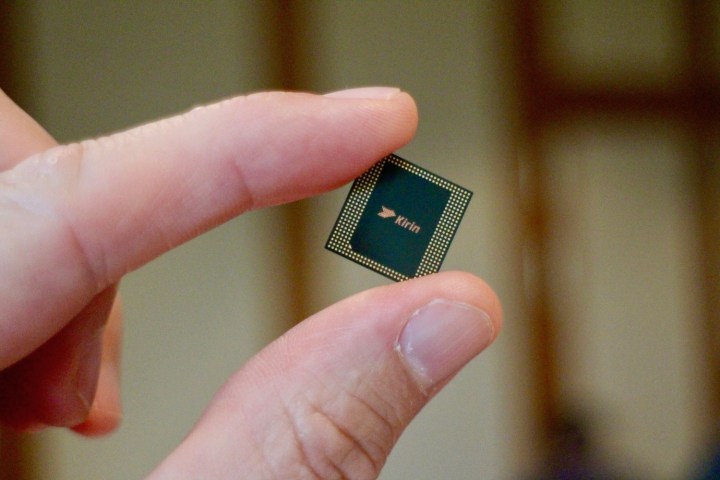
When talking about the new Kirin 980 processor, Huawei mentions a lot of world firsts, a lot of percentages, and a lot of very big numbers. We’re going to get to those, but they all boil down to one thing: This is a fast, ultra-high-performance mobile processor, and likely one of the most advanced we’ve ever seen. It’s not just the promised raw speed, but the new artificial intelligence features that entice here. What’s more, it won’t be long until we see it in a phone.
Let’s do the world firsts first. The Huawei Kirin 980 — unveiled during a keynote speech at the IFA 2018 show in Berlin — is the world’s first 7nm mobile system-on-a-chip (SoC), with the first Dual Neural Processing Unit (NPU), the first Cortex A76 cores, the first Mali G76 graphics processing unit (GPU), the first example of a 1.4Gbps Cat.21 modem, and the first to use LPDDRX4 RAM running at 2,133 MHz. What does all this mean? Huawei repeated it over and over again: more performance, better efficiency.
The Kirin 980 is the result of 36 months work from a team of more than 1,000 design and process experts, and it contains a dizzying 6.9 billion transistors. Compared to the 10nm Kirin 970 seen in everything from the P20 Pro to the Honor Play, the Kirin 980 is 20 percent faster and uses 40 percent less energy. The Cortex A76 cores alone provide 75 percent higher performance than the Kirin 970’s cores.
The chip is made up of eight cores in total: two big Cortex A76 cores, along with two middle cores, and four little cores. These split tasks up according to needs. For example, the little cores deal with music and video streaming, while social and messaging apps bring in the middle cores for assistance, and playing games sees all eight cores working hard. Huawei has added a degree of artificial intelligence to this process, which it calls A.I. Loading Prediction. The system understands where and when power is needed, and adjusts the output accordingly ahead of time, ready to provide the best experience, particularly when playing games.
More A.I. capabilities
The Kirin 970 introduced the world to the NPU, which takes care of A.I. processing on a device, rather than messing around in the cloud. It’s faster, and more efficient, in case you hadn’t guessed. The Kirin 980 has two NPUs, and can recognize 4,500 images per minute, compared to the 2,371 recognized each minute by the Qualcomm Snapdragon 845. Huawei claims its chip is 135 percent faster overall than the Snapdragon 845, and 88 percent more efficient. The Dual NPUs also add real-time image processing to video, rather than solely on stills with the single NPU, and can recognize the particulars of an image too.
A new dual Image Signal Processor (ISP) for cameras is also part of the Kirin 980. In some demonstration images, we saw more detail, better white balance, and an overall sharper image than one taken without the Kirin 980 chip. Again, expect a 46 percent performance increase and 33 percent reduction in latency. Repeat the mantra: more performance, better efficiency. This even applies to a new Wi-Fi chip for higher peak speeds, and a new dual-frequency GPS chip for 10 times greater positioning accuracy.
Numbers, especially when related to processors, are rarely exciting. But the prospect of such a big boost over the already impressive Kirin 970 makes us really keen to try one out. We need to see if all these comparisons and percentages translate into real life gains. The great news is, we don’t have long to wait. Huawei will use the Kirin 980 in the forthcoming Mate 20 smartphone, which it will launch in October.
Once more, for Huawei, repeat after me: more performance, better efficiency, more performance, better efficiency.


